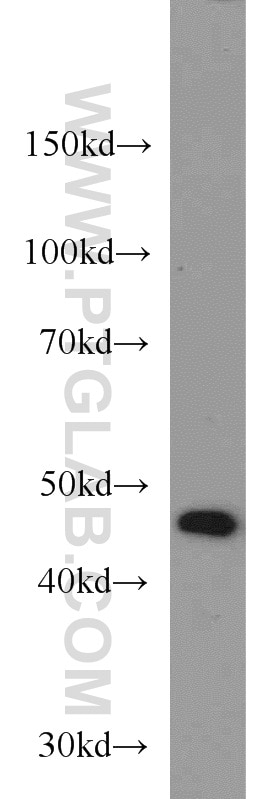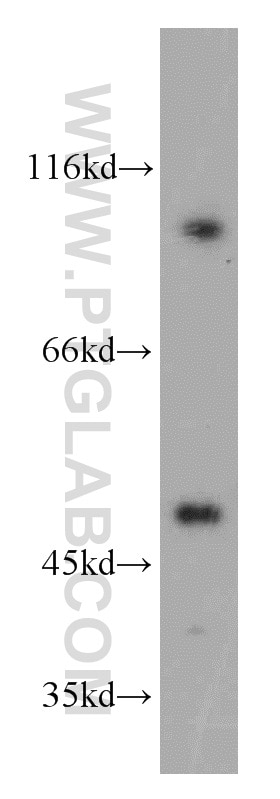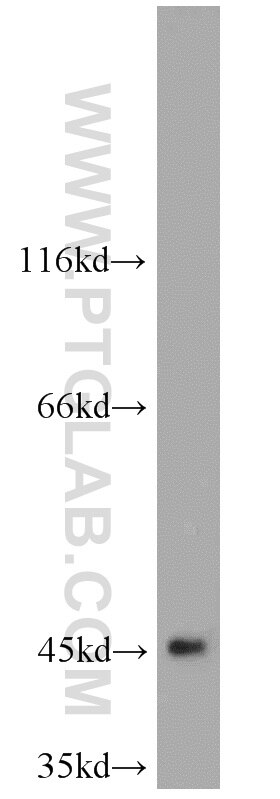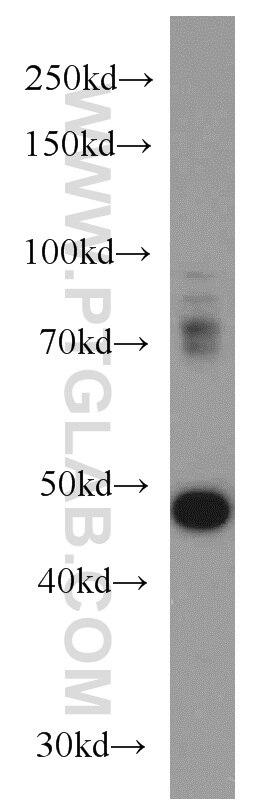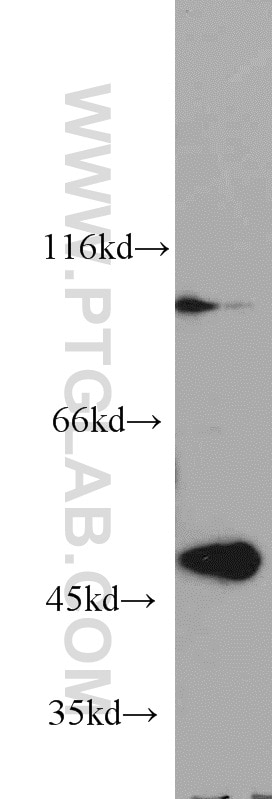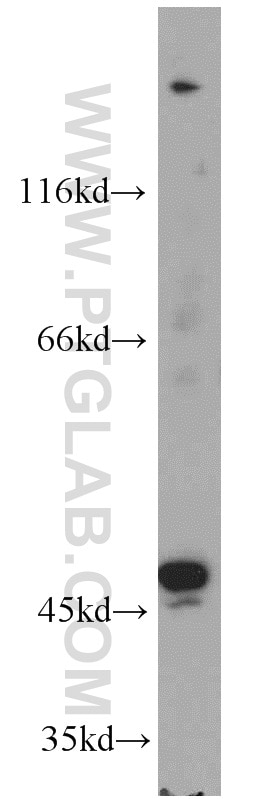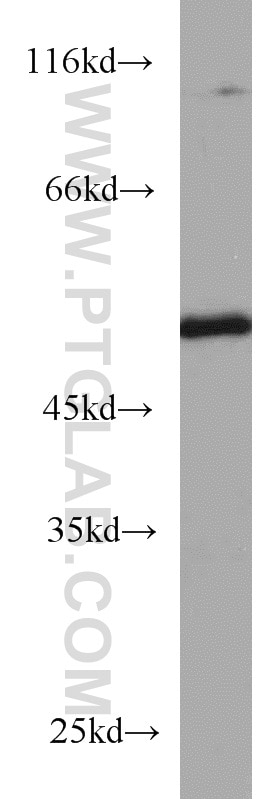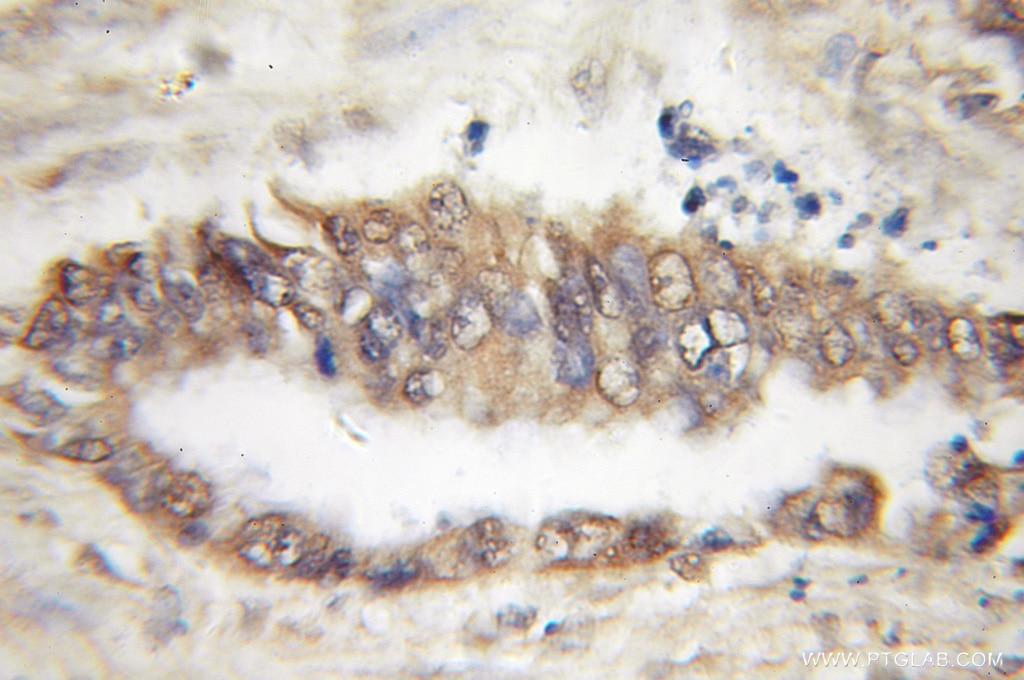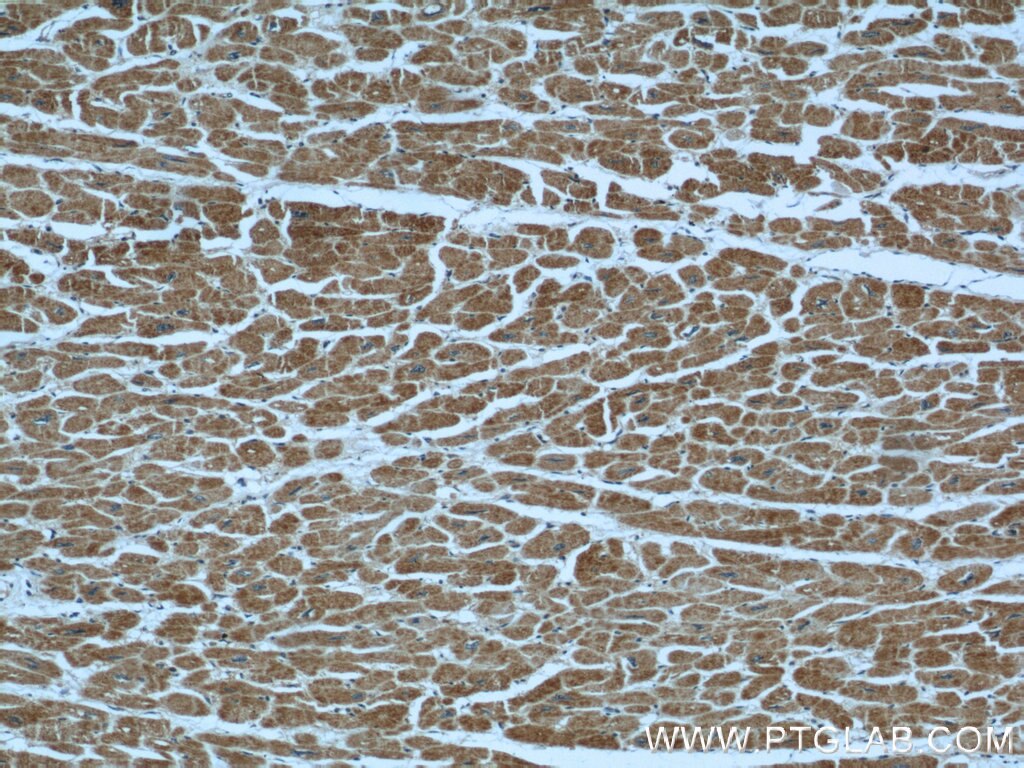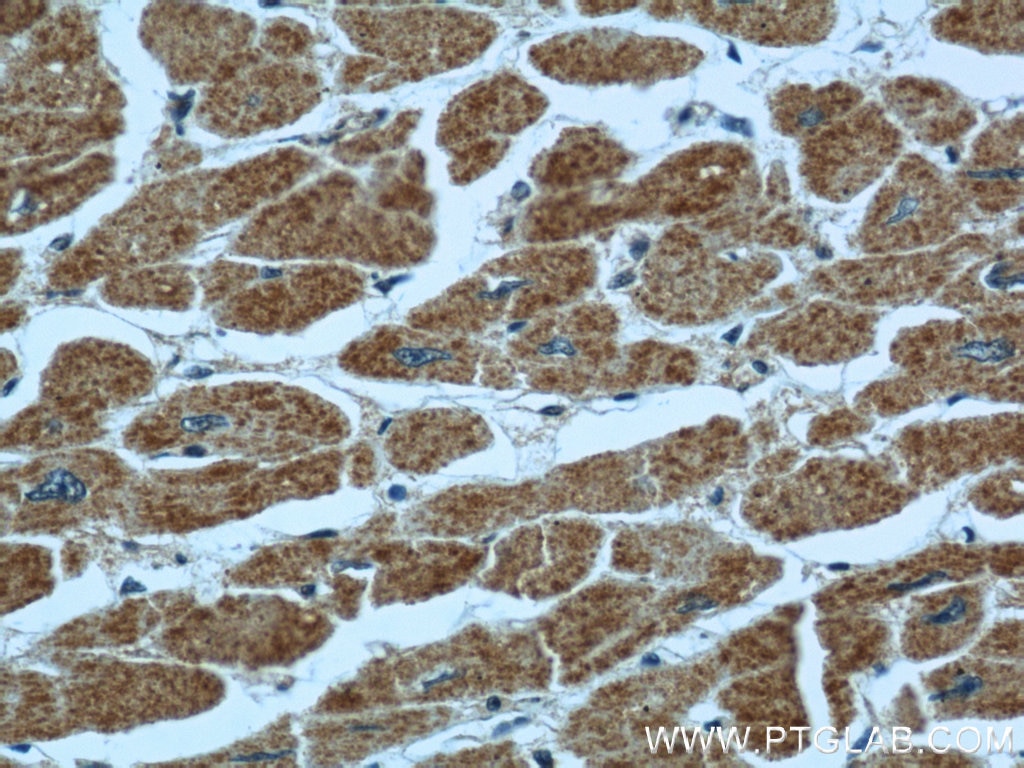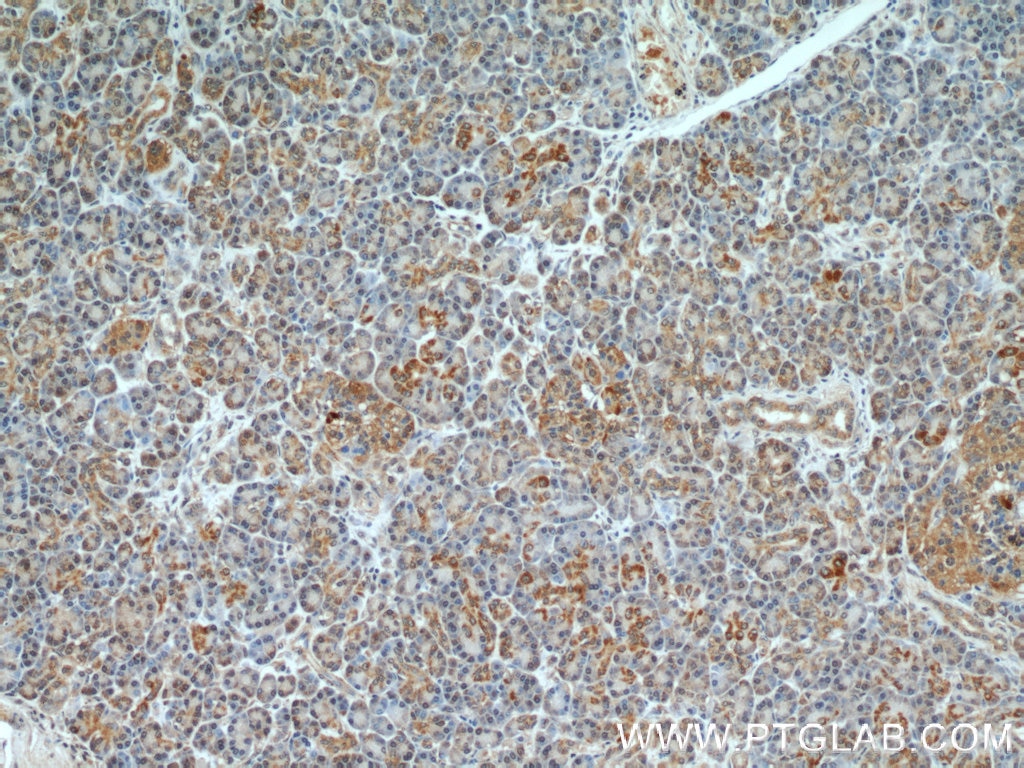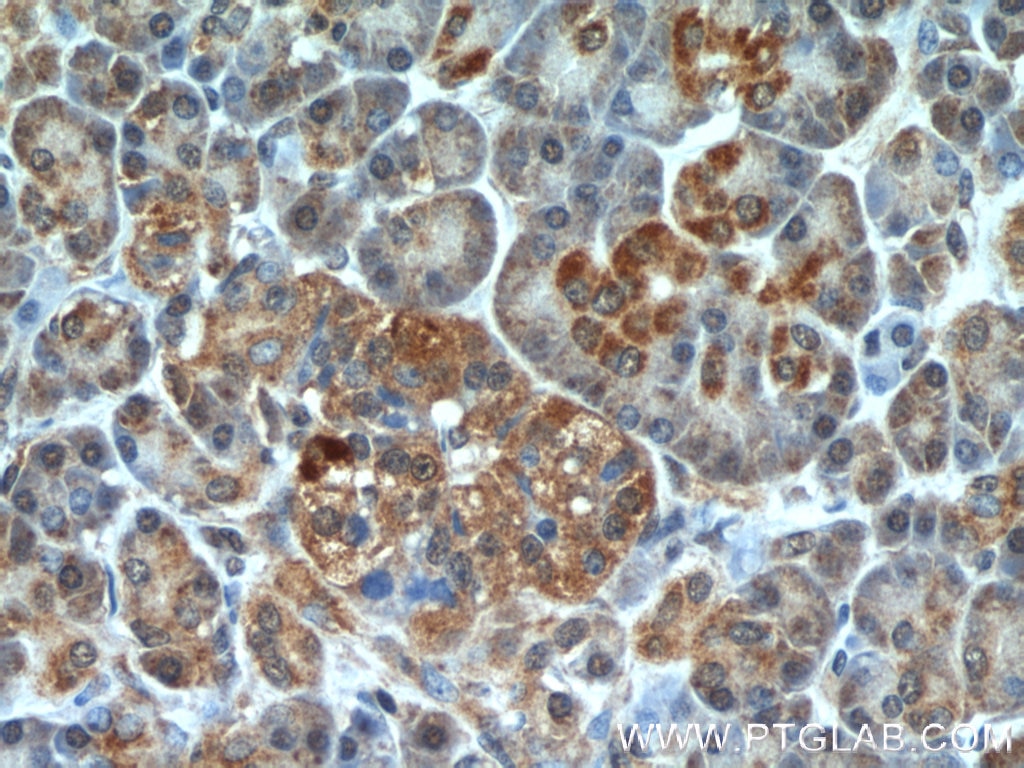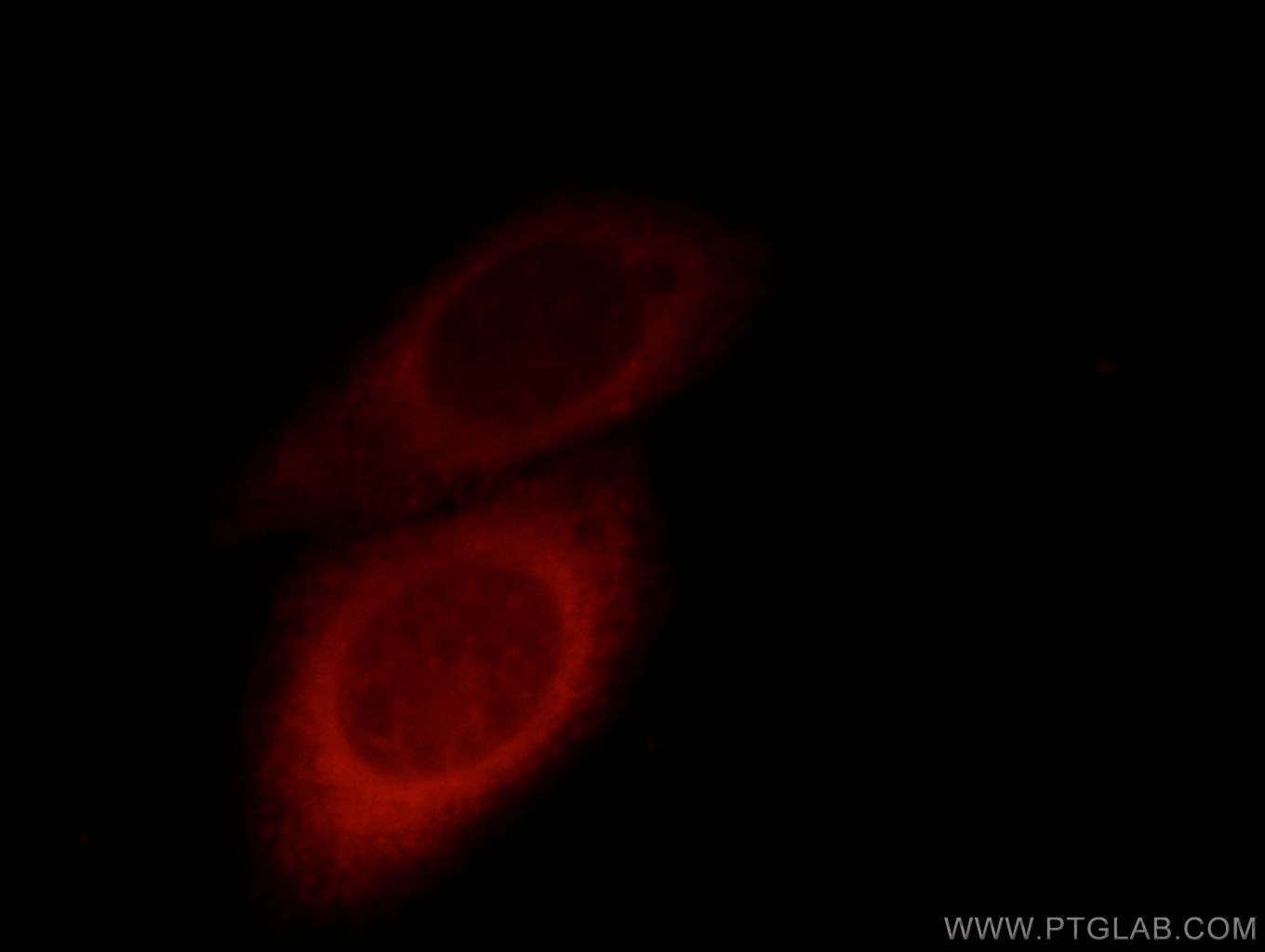- Phare
- Validé par KD/KO
Anticorps Polyclonal de lapin anti-TBL2
TBL2 Polyclonal Antibody for WB, IHC, IF/ICC, IP, ELISA
Hôte / Isotype
Lapin / IgG
Réactivité testée
Humain, souris
Applications
WB, IHC, IF/ICC, IP, ELISA
Conjugaison
Non conjugué
N° de cat : 12488-1-AP
Synonymes
Galerie de données de validation
Applications testées
| Résultats positifs en WB | cellules COLO 320, cellules HeLa, cellules Jurkat, tissu pancréatique de souris, tissu placentaire de souris, tissu placentaire humain |
| Résultats positifs en IP | cellules COLO 320 |
| Résultats positifs en IHC | tissu de cancer du pancréas humain, tissu cardiaque humain, tissu pancréatique humain il est suggéré de démasquer l'antigène avec un tampon de TE buffer pH 9.0; (*) À défaut, 'le démasquage de l'antigène peut être 'effectué avec un tampon citrate pH 6,0. |
| Résultats positifs en IF/ICC | cellules HepG2 |
Dilution recommandée
| Application | Dilution |
|---|---|
| Western Blot (WB) | WB : 1:500-1:2000 |
| Immunoprécipitation (IP) | IP : 0.5-4.0 ug for 1.0-3.0 mg of total protein lysate |
| Immunohistochimie (IHC) | IHC : 1:20-1:200 |
| Immunofluorescence (IF)/ICC | IF/ICC : 1:10-1:100 |
| It is recommended that this reagent should be titrated in each testing system to obtain optimal results. | |
| Sample-dependent, check data in validation data gallery | |
Applications publiées
| KD/KO | See 2 publications below |
| WB | See 6 publications below |
| IHC | See 2 publications below |
| IF | See 3 publications below |
Informations sur le produit
12488-1-AP cible TBL2 dans les applications de WB, IHC, IF/ICC, IP, ELISA et montre une réactivité avec des échantillons Humain, souris
| Réactivité | Humain, souris |
| Réactivité citée | Humain |
| Hôte / Isotype | Lapin / IgG |
| Clonalité | Polyclonal |
| Type | Anticorps |
| Immunogène | TBL2 Protéine recombinante Ag3200 |
| Nom complet | transducin (beta)-like 2 |
| Masse moléculaire calculée | 446 aa, 50 kDa |
| Poids moléculaire observé | 45-50 kDa |
| Numéro d’acquisition GenBank | BC012938 |
| Symbole du gène | TBL2 |
| Identification du gène (NCBI) | 26608 |
| Conjugaison | Non conjugué |
| Forme | Liquide |
| Méthode de purification | Purification par affinité contre l'antigène |
| Tampon de stockage | PBS with 0.02% sodium azide and 50% glycerol |
| Conditions de stockage | Stocker à -20°C. Stable pendant un an après l'expédition. L'aliquotage n'est pas nécessaire pour le stockage à -20oC Les 20ul contiennent 0,1% de BSA. |
Informations générales
TBL2 belongs to a member of the beta-transducin protein family. This gene is commonly deleted in Williams-Beuren syndrome, a developmental disorder with multi-system manifestations caused by haploinsufficiency for contiguous genes deleted in chromosome region 7q11.23. TBL2 encodes a protein with four putative WD40 repeats, which may be involved in some intracellular signaling pathway.
Protocole
| Product Specific Protocols | |
|---|---|
| WB protocol for TBL2 antibody 12488-1-AP | Download protocol |
| IHC protocol for TBL2 antibody 12488-1-AP | Download protocol |
| IF protocol for TBL2 antibody 12488-1-AP | Download protocol |
| IP protocol for TBL2 antibody 12488-1-AP | Download protocol |
| Standard Protocols | |
|---|---|
| Click here to view our Standard Protocols |
Publications
| Species | Application | Title |
|---|---|---|
Adv Sci (Weinh) TBL2 Promotes Tumorigenesis via PRMT5/WDR77-Mediated AKT Activation in Breast Cancer | ||
Adv Sci (Weinh) Primate-Specific DAZ Regulates Translation of Cell Proliferation-Related mRNAs and is Essential for Maintenance of Spermatogonia | ||
PLoS One TBL2 Is a Novel PERK-Binding Protein that Modulates Stress-Signaling and Cell Survival during Endoplasmic Reticulum Stress.
| ||
J Cell Biochem TBL2 Associates With ATF4 mRNA Via Its WD40 Domain and Regulates Its Translation During ER Stress. | ||
Biochem Biophys Res Commun The endoplasmic reticulum-localized protein TBL2 interacts with the 60S ribosomal subunit. | ||
Ann Surg Oncol Transducin Beta-Like 2 is a Potential Driver Gene that Adapts to Endoplasmic Reticulum Stress to Promote Tumor Growth of Lung Adenocarcinoma
|
